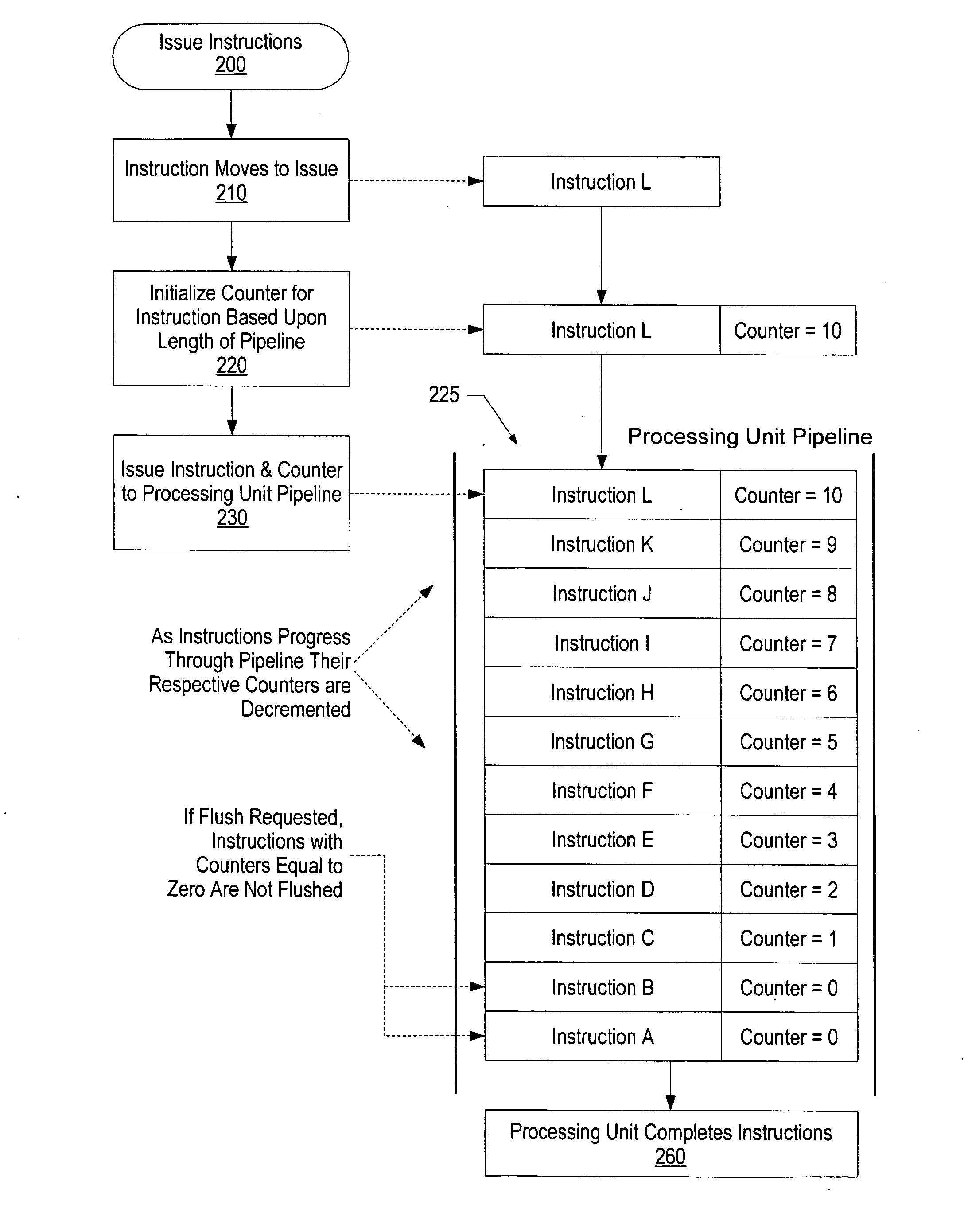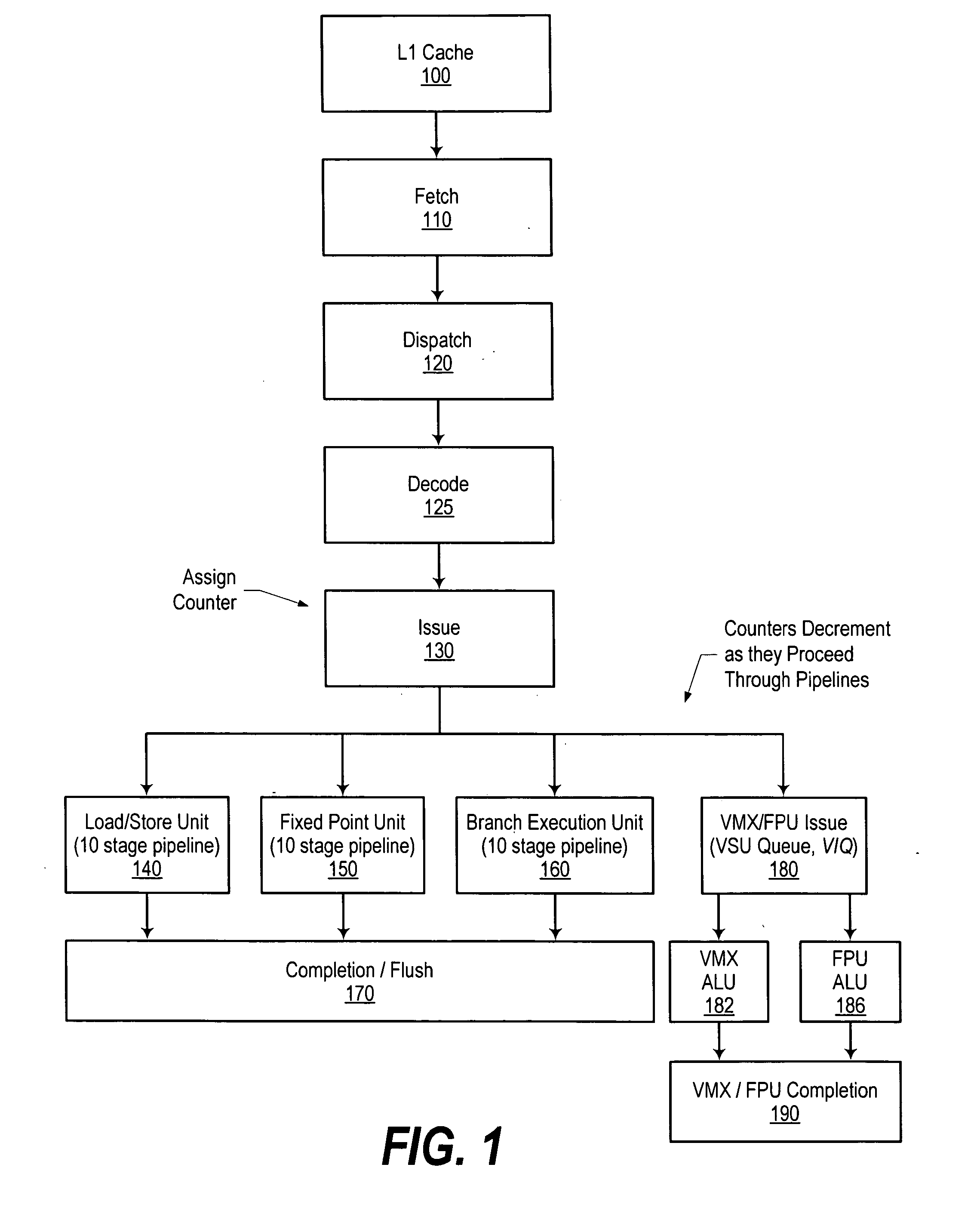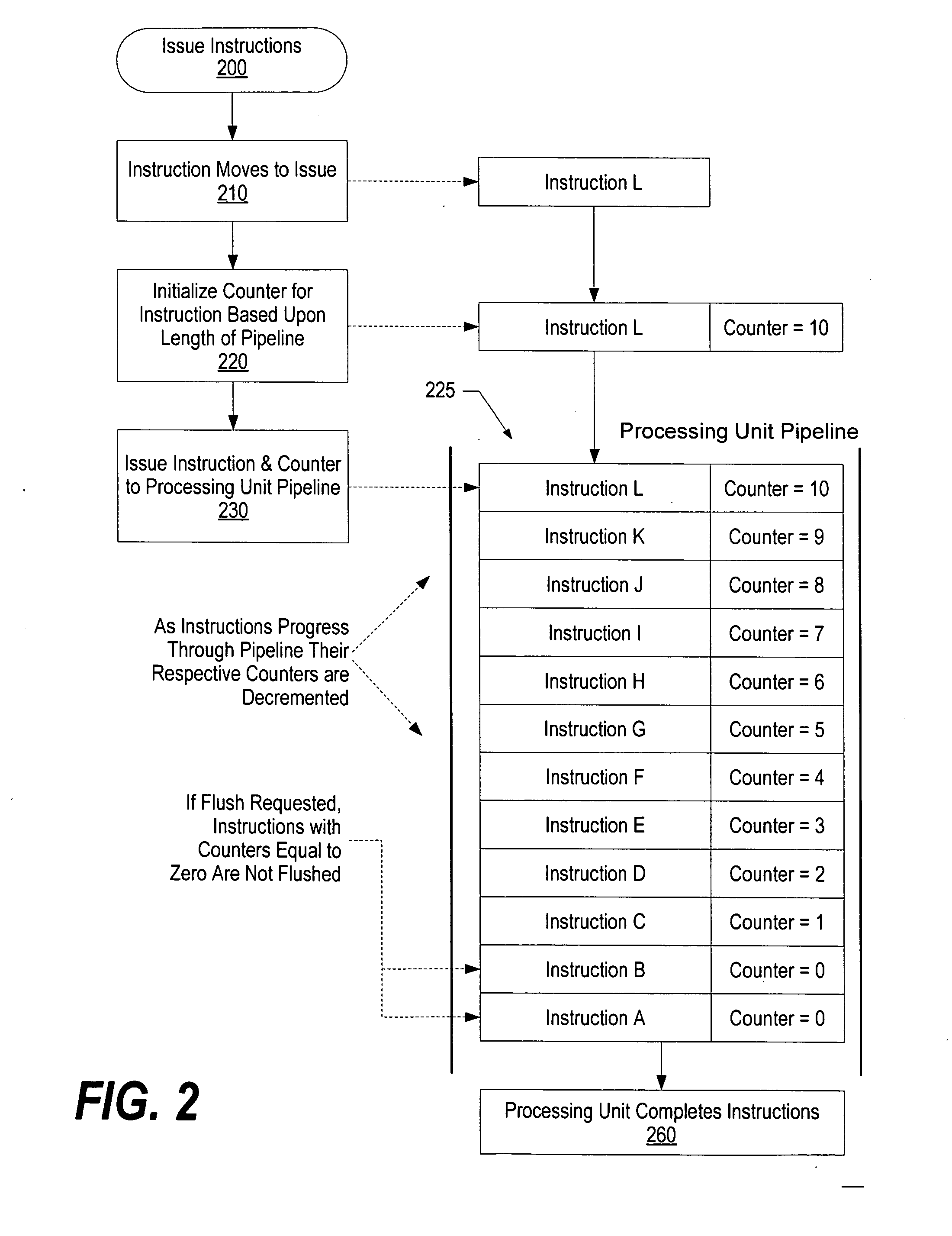System and method for time-of-life counter design for handling instruction flushes from a queue
a time-of-life counter and instruction technology, applied in the field of system and method for flushing instructions in the execution unit, can solve the problems of reducing performance, causing certain challenges, and causing hazard in the execution of orders, and achieve the effect of efficiently identified and flushed
- Summary
- Abstract
- Description
- Claims
- Application Information
AI Technical Summary
Benefits of technology
Problems solved by technology
Method used
Image
Examples
Embodiment Construction
[0024] The following is intended to provide a detailed description of an example of the invention and should not be taken to be limiting of the invention itself. Rather, any number of variations may fall within the scope of the invention, which is defined in the claims following the description.
[0025]FIG. 1 is a high level diagram showing various processor components that handle instruction flushes from a queue using a counter. Level One (L1) cache 100 is memory that is very high speed but small in size. The processor tries to read instructions from level one cache 100 first. If the required instruction is not present in the L1 cache, the L2 cache (now shown) is tried next. L2 cache is a larger size but slower speed than the L1 cache. If the required instruction is not present in the L2 cache, the system memory (DRAM) or L3 cache if there is one, is tried next. The slower the cache, the longer the wait for the needed instruction.
[0026] Fetch circuitry 110 is used to fetch needed i...
PUM
 Login to View More
Login to View More Abstract
Description
Claims
Application Information
 Login to View More
Login to View More - R&D
- Intellectual Property
- Life Sciences
- Materials
- Tech Scout
- Unparalleled Data Quality
- Higher Quality Content
- 60% Fewer Hallucinations
Browse by: Latest US Patents, China's latest patents, Technical Efficacy Thesaurus, Application Domain, Technology Topic, Popular Technical Reports.
© 2025 PatSnap. All rights reserved.Legal|Privacy policy|Modern Slavery Act Transparency Statement|Sitemap|About US| Contact US: help@patsnap.com



